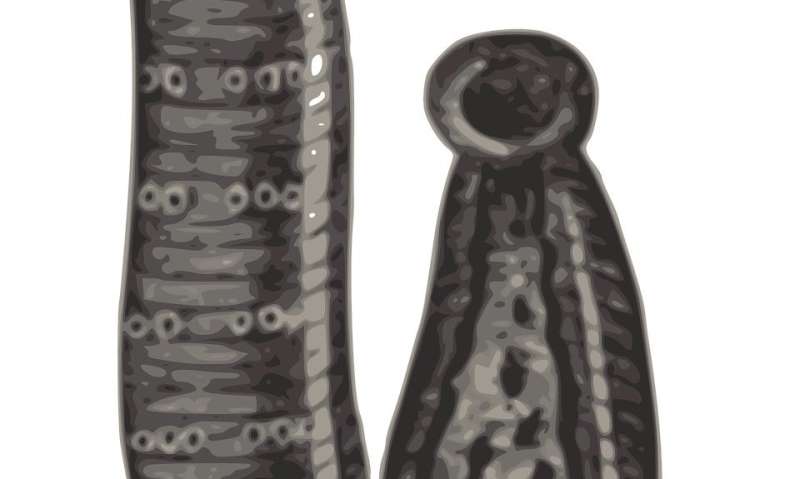The wall-climbing robot inspired by a leech

A soft and flexible leech-shaped robot that can climb vertical walls has been developed as part of a collaborative research project.
LEeCH (Longitudinally Extensible Continuum-robot inspired by Hirudinea) has been borne out of research led by Dr. Tomoaki Mashimo, Associate Professor of the Department of Mechanical Engineering at Toyohashi University of Technology (TUT), in collaboration with Dr. Fumiya Iida, Reader in Robotics at the Department of Engineering, University of Cambridge. The study has been published in the journal Soft Robotics.
Inspired by land leeches, which are excellent climbers in nature, LEeCH is capable of elongating and bending its body without any constraints and, thanks to its flexible structure (made of a shower hose material) and two suction cups, the robot has successfully climbed up and down a vertical wall and transitioned horizontally to reach the other side.
Wall climbing robots have a wide range of potential applications, including building inspection and maintenance, and search and rescue tasks at disaster sites. In reality, the robot may have to navigate over obstacles on a wall, as well as transition to walls in different directions. The hardest task for a robot is being able to climb up onto the top of the wall and traverse the summit over to the other side—LEeCH has achieved this free movement in what is believed to be a world-first.
Dr. Fumiya Iida said: "Climbing robots have a wide range of potential applications, including building inspection, maintenance, construction, and search and rescue tasks. Climbing robotics is still a challenging research field both theoretically and practically, but together, we have made significant contributions to advance this field by creating a robot, inspired by leeches, that can transition from one surface to another and can climb a vertical wall—without any constraints."
"This project was based on a collaboration with visiting Ph.D. student Ayato Kanada. Our paper showcased the successful synergy of TUT's novel actuator technology with our theoretical soft robotics framework," he added.
The research team designed a new motion mechanism using tube structure of shower hose to mimic the advantageous properties of leeches, namely, lightweight, flexible and extensible. The robot has a body composed of three flexible tubes that are connected in parallel. The body can bend or elongate by controlling the length of each flexible tube fed by the gear.
Ayato Kanada, Doctoral Programs student at TUT and lead author of the study, came up with the idea for LEeCH while in his bathroom at home. "The shower hose went wild as if it had a life when I inadvertently turned on the faucet at maximum. Then an idea occurred to me that if I could manipulate a hose, I might be able to make a robot with dynamic movement of a living creature," he said.
The team is now considering the possibility of changing the stiffness of the tube by pouring fluid into the cavity. Land leeches' bodies are so light and soft that they are unlikely to suffer great damage in a fall from height. Likewise, a robot with flexible body structure is not only highly adaptable to the environment, but can also withstand collision. Therefore, being lightweight and flexible is necessary for a climbing robot's safety and survival.
More information: Ayato Kanada et al. Reachability Improvement of a Climbing Robot Based on Large Deformations Induced by Tri-Tube Soft Actuators, Soft Robotics (2019). DOI: 10.1089/soro.2018.0115




















